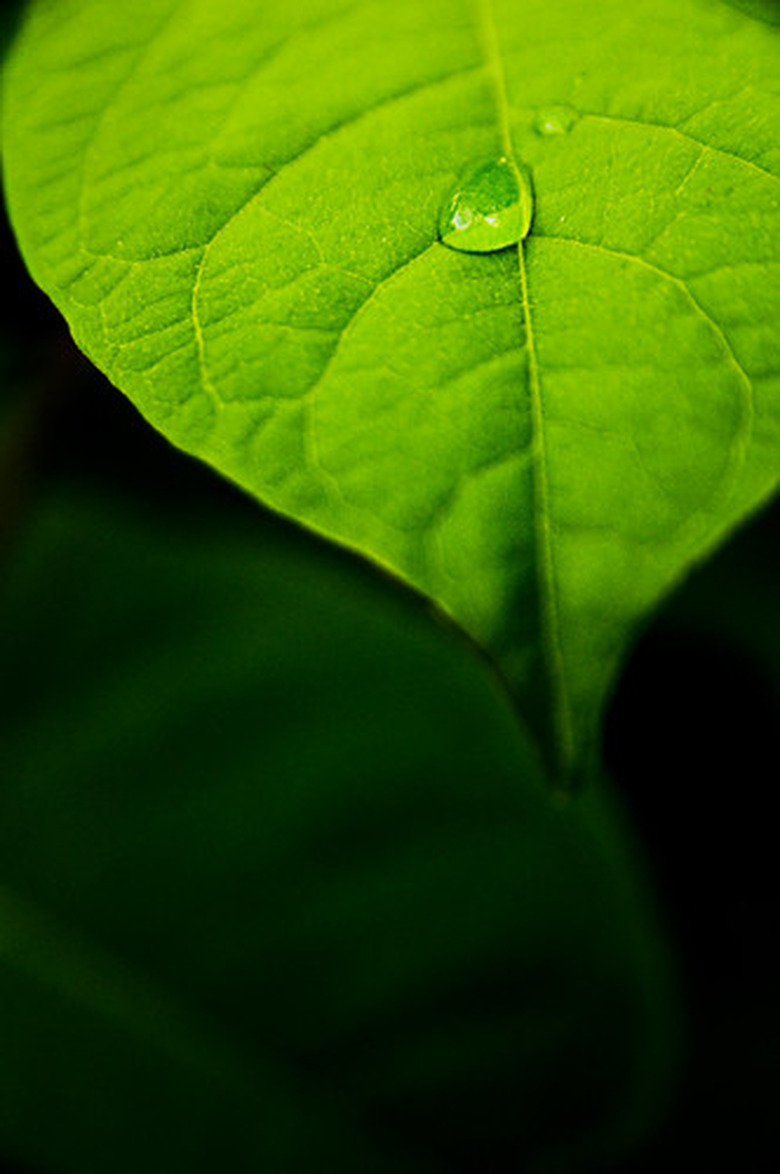What Is The Waste Product Of Photosynthesis?
People tend to think that plants are very dependent since they are immobile, but that couldn't be more wrong. Unlike humans, who rely on other organisms to produce the energy they consume, plants are autotrophs, which means "self-feeding." Thanks to the process of photosynthesis, plants produce energy directly from the sun.
TL;DR (Too Long; Didn't Read)
Photosynthesis is the process by which plants use sunlight to convert carbon dioxide and water into usable energy called glucose. The waste product of photosynthesis is oxygen, which humans breathe. The chemical equation for photosynthesis shows this:
6CO2 + 6H20⇒C6H12O6 + 602
The Ingredients for Photosynthesis
The Ingredients for Photosynthesis
To perform photosynthesis, plants must collect three things: water, carbon dioxide and sunlight. Most plants draw water from the ground using roots. They collect carbon dioxide from the ambient air via tiny pores scattered throughout their leaves, flowers, stems and roots. Finally, plants use specialized pigment molecules called chlorophyll to absorb light from the sun. These molecules accumulate in the leaves and stems and are responsible for the green color of plants.
The Process of Photosynthesis
The Process of Photosynthesis
Photosynthesis is a chemical process with the following equation:
6CO2 + 6H20 ⇒ C6H12O6 + 602
This means that, in the presence of sunlight, plants take six molecules of carbon dioxide (CO2) and six molecules of water (H2O) and break them apart. They then rearrange those individual units, converting them into glucose (C6H1206) plus six molecules of oxygen (O2). If you look at the chemical equation, you can see there are the same number of carbons, oxygens, and hydrogens on each side of the equation; they have merely been rearranged.
The Products of Photosynthesis
The Products of Photosynthesis
Glucose is the energy that plants require to grow and produce flowers and fruit. After photosynthesis, plants use the glucose they need right away and store the remainder for later. Because plants don't use oxygen, they release it as a waste product through the same pores they used to take in carbon dioxide. This is very helpful for humans and other animals who breathe the oxygen that plants release into the atmosphere.
Plants help humans in another way via photosynthesis, too: since humans are heterotrophs who don't self-feed, they rely on the glucose stored in plants for energy. They access this energy by either directly consuming vegetables and fruits or consuming animals that fed on those plants.
Even thought plants don't roam the Earth like other life forms, they certainly aren't weak or dependent. In fact, they might be some of the most independent creatures on the planet, using a specialized process to self-feed and, as a fortunate byproduct, produce the energy and oxygen that humans need to sustain life.
Cite This Article
MLA
Mayer, Melissa. "What Is The Waste Product Of Photosynthesis?" sciencing.com, https://www.sciencing.com/waste-product-photosynthesis-6175070/. 22 November 2019.
APA
Mayer, Melissa. (2019, November 22). What Is The Waste Product Of Photosynthesis?. sciencing.com. Retrieved from https://www.sciencing.com/waste-product-photosynthesis-6175070/
Chicago
Mayer, Melissa. What Is The Waste Product Of Photosynthesis? last modified March 24, 2022. https://www.sciencing.com/waste-product-photosynthesis-6175070/
